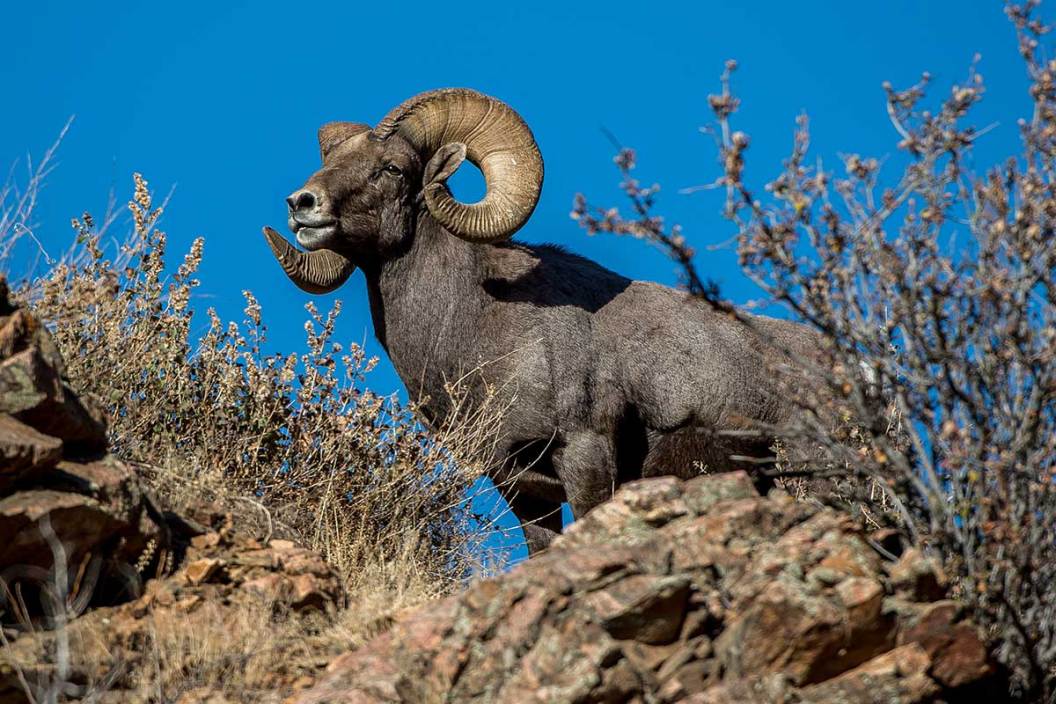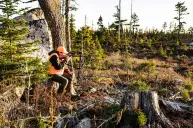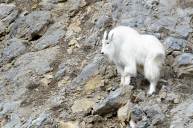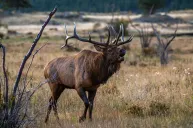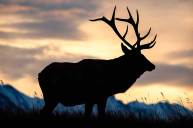If a bighorn ram tops your bucket list, here's what you should know about these once-in-a-lifetime hunts.
Bighorn sheep obviously earned their name for the large, curved headwear they sport. Even the ewes can carry a smaller version. Depending on subspecies and region, bighorn rams can tip the scales at 500 pounds!
The number and differentiators of bighorn subspecies are up for debate, but these North American sheep are typically grouped into three categories. Desert bighorn sheep inhabit mountain ranges in Utah, Nevada, Arizona, New Mexico, and their range stretches into Mexico. Rocky Mountain bighorn sheep, which a little larger than their desert relatives, are found in Colorado, Washington, Idaho, Montana, Wyoming, Alberta, and British Columbia. California bighorn sheep primarily live in the Golden State and Oregon.
Bighorn Sheep Tags
Unlike most big game, you can't just buy a bighorn tag over the counter or wait it out for a couple years while tallying preference points. Only 1,000 of these highly sought after, coveted tags are issued each year, and they can easily run recipients into the six-figure range.
You can enter tag lotteries, but the process varies widely from state to state with different opportunities and preference point policies, and it's much more difficult for non-residents to draw in most states. In fact, you've got less than a 1% chance of drawing on year one as a non-resident.
Hunters can also enter raffles for special privilege bighorn sheep hunts, but the odds are even lower per entry (although you can normally buy multiple tickets).
If you've got really deep pockets, you can try to buy a governor's tag, which is auctioned off with proceeds supporting bighorn conservation. But keep in mind, one of these went for $440,000 in Montana last year.
Bighorn Sheep Hunting
If you manage the near-impossible and secure a bighorn tag, you'll definitely want to drop a little more cash to book with an outfitter to up your odds of success.
Most stateside bighorn hunting seasons kick off in August and run through October or November, with prime opportunities in September and October. But your tag type may dictate exactly when and where you can hunt.
Bighorn hunts can be incredibly challenging. Expect to spot and stalk over treacherous terrain and put on the hours glassing across rocky slopes. Bighorn sheep are hyper-aware and possess keen senses, so you should be comfortable taking long-distance shots before heading out on a sheep hunt. Even then, success rates can be low.
You've got a better chance of being struck by lightning than securing a bighorn sheep tag and subsequently filling it in one lifetime. If you're lucky enough to manage both, you might just want to try your odds in Vegas.
Products featured on Wide Open Spaces are independently selected by our writers and editors. However, when you buy something through our links, we may earn a commission.
NEXT: GRIZZLY BEAR HUNTING: WHERE IT'S LEGAL AND HOW TO GET STARTED
